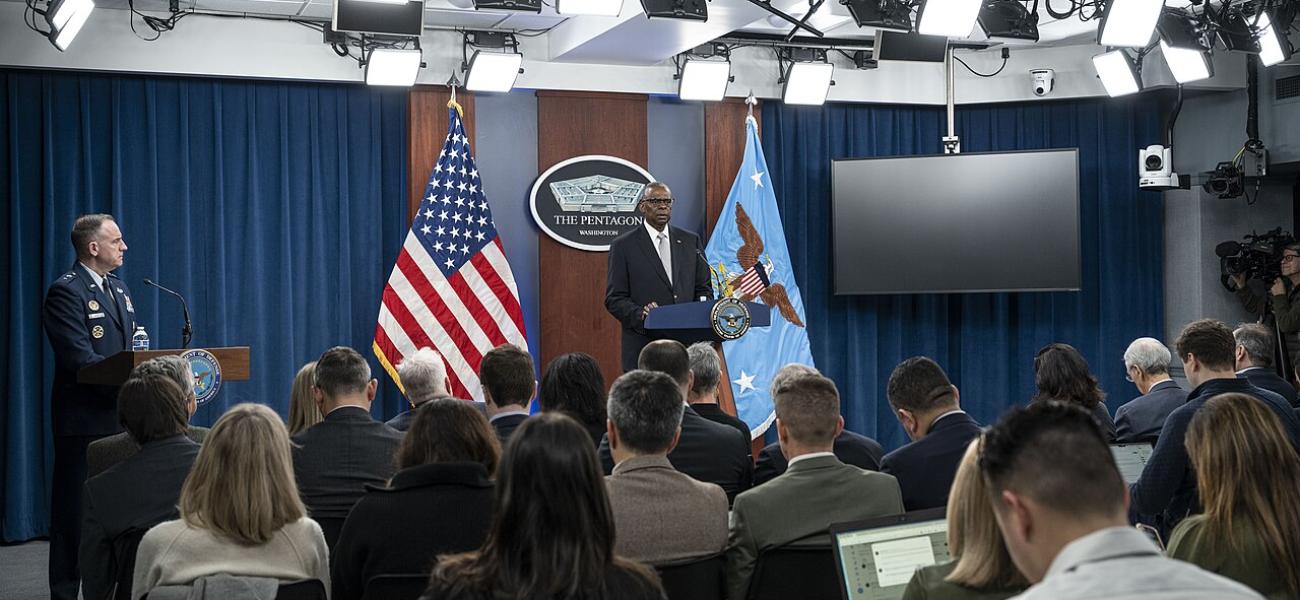
What the Pentagon Has Learned From 2 Years of War in Ukraine
February 22, 2024
Alex Horton
This is a summary of an article originally published by The Washington Post.
The author, a national security reporter for The Washington Post, writes:
- The war remains an active and bountiful research opportunity for American military planners as they look to the future, officials say. A classified year-long study on the lessons learned from both sides of the bloody campaign will help inform the next National Defense Strategy, a sweeping document that aligns the Pentagon's myriad priorities. The 20 officers who led the project examined five areas: ground maneuver, air power, information warfare, sustaining and growing forces and long range fire capability.
- The Ukraine conflict has challenged core assumptions. The war has become an attritional slugfest with each side attempting to wear down the other, a model thought to be anachronistic, said Stacie Pettyjohn, director of the defense program at the Center for a New American Security, a think tank.
- It also has complicated a long-held belief in the Pentagon that expensive precision weapons are central to winning America's conflicts, Pettyjohn said. GPS-guided munitions provided to Ukraine have proven vulnerable to electronic jamming. Its military has adapted by pairing older unguided artillery with sensors and drones, which can be used to spot targets and refine their shots. U.S. military commanders have almost certainly taken notice, she said.
- Ukraine has demonstrated that everything U.S. troops do in the field — from planning missions and patrolling to the technology that enables virtually every military task — needs to be rethought, officials say.
- Vitally, commanders warn over and over that most electronic gear is a potential target. Soldiers are instructed to not use their phones in the training area, and observers, known as OCs, carry handheld detectors trying to sniff out any contraband.
- Troops also have to consider the cellphone use occurring around them. Personnel tasked with portraying noncombatants capture photos and videos of troop locations and equipment, and upload the imagery to a mock social network called Fakebook.
- The technology's proliferation has also created a new urgency at the Pentagon to develop and field better counter-drone systems.... The Army, taking cues from the Ukraine war, has begun experimenting with dropping small munitions from drones, a tactic used by the Islamic State that has since become a mainstay in Ukraine. It also has made a decision to do away with two surveillance drone platforms, the Shadow and Raven, describing them as unable to survive in modern conflict.
- The Ukrainians have discovered some innovative solutions to detect drones, Gen. James B. Hecker, the chief of Air Force operations in Europe and Africa, said during a recent symposium. He told the story of two Ukrainians who collected thousands of smartphones, affixed microphones and connected them to a network capable of detecting the unique buzzing sound of approaching unmanned systems.
Read the full article at The Washington Post.
Photo is a U.S. government work available in the public domain.
Click to Subscribe
Russia Matters offers weekly news and analysis digests, event announcements and media advisories.
Choose and sign up here!
Recent Posts
Mitter, Wishnick: Alignment, Not Alliance for Russia-China Relationship
April 18, 2024
Conor Cunningham
Polls Show Record Low Number of Russians Willing to Permanently Move Abroad
April 12, 2024
Simon Saradzhyan
Fiona Hill Delivers Insights on Russia's Perennial Role in Global Geopolitics
March 21, 2024
Conor Cunningham
How Much Would 0.25% of Ramstein Group Members’ GDP Really Raise for Ukraine?
March 07, 2024
Conor Cunningham and RM Staff
